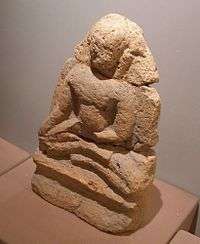Kedah Sultanate
| Kedah Protectorate قدح در الامن | ||||||||||||||
| Negeri Kedah | ||||||||||||||
| Protectorate of the United Kingdom | ||||||||||||||
| ||||||||||||||
| ||||||||||||||
 Kedah in present-day Malaysia | ||||||||||||||
| Capital | Alor Setar1 | |||||||||||||
| Languages | Malay2 English Kedah Malay Aslian | |||||||||||||
| Religion | Sunni Islam | |||||||||||||
| Political structure | Protectorate | |||||||||||||
| Monarch | ||||||||||||||
| • | 1901–1910 | Edward VII | ||||||||||||
| • | 1936–1952 | George VI | ||||||||||||
| Advisor | ||||||||||||||
| • | 1909–1915; 1918–1919 | George Maxwell | ||||||||||||
| Historical era | British Empire | |||||||||||||
| • | Anglo-Siamese Treaty of 1909 | 9 July 1909 | ||||||||||||
| • | Japanese occupation | 1941 | ||||||||||||
| • | Annexed by Thailand | 18 October 1943 | ||||||||||||
| • | Japanese surrender; Returned to United Kingdom | 14 August 1945 | ||||||||||||
| • | Added into Malayan Union | 31 March 1946 | ||||||||||||
| Currency | Straits dollar until 1939 Malayan dollar until 1953 | |||||||||||||
| ||||||||||||||
| Today part of | | |||||||||||||
| 1 Remains as capital until today 2 Malay using Jawi (Arabic) script | ||||||||||||||
Part of a series on the |
|---|
| History of Thailand |
 |
|
Legendary Suvarnabhumi Central Thailand Dvaravati Lavo Supannabhum Northern Thailand Singhanavati Ngoenyang Hariphunchai Southern Thailand Pan Pan Raktamaritika Langkasuka Srivijaya Tambralinga Nakhon Si Thammarat Sultanate of Pattani Kedah Sultanate |
| History |
|
Sukhothai Kingdom Ayutthaya Kingdom Thonburi Kingdom Rattanakosin Kingdom Military period Democratic period |
|
Regional history |
|
|
The Sultanate of Kedah may be the earliest sultanate on the Malay Peninsula and is supposedly one of the oldest Sultanates in the world, allegedly founded in 1136.
The information regarding the formation of this sultanate and the history before and after its creation comes from the "Kedah Annals". The Kedah Annals were written in the eighteenth century, over a millennium after the formation of the Kedah Kingdom. It describes the first king of Kedah as arriving on the shores of Kedah as a result of an attack by a mythical gigantic beast. It states that the nation was founded by the offspring of Alexander the Great; who maintained ties with Rome throughout his reign (oddly two centuries after the decline of the Roman Empire due to sacks by the Visigoths and Vandals in 410 and 455).
The Kedah Annals also provide us with very unreliable information regarding the sultans of Kedah. Listing the first sultan of Kedah as Sultan Mudzafar Shah I centuries before the partitioning of the Arabic Muslim empire into distinct sultanates and almost three centuries prior to the contradictory claims of the Terengganu Inscription Stone. This claim also directly contradicts the fact that the Buddhist Srivijaya kingdom was in direct control of Kedah at the time that Sultan Mudzafar Shah I allegedly converted the region to a sultanate.
Kedah Kingdom
Kedah Kingdom (630-1136) was founded by Maharaja Derbar Raja of Gemeron around 630 CE and the Hindu dynasty ended when Phra Ong Mahawangsa converted to Islam.


History
Around 170 CE a group of native refugees of Hindu faith arrived at Kedah, joining them soon were peoples from nearby islands and from the northern Mon-Khmer region . Ancient Kedah covered the areas of Kuala Bahang, Kuala Bara, Kuala Pila and Merpah, and the inhabitants of Kedah appointed Tun Derma Dewa and Tun Perkasa as their village chiefs.
The king from Gemeron
In 630 CE, Maharaja Derbar Raja of Gemeron (now known as Bandar Abbas) in Persia was defeated in battle and escaped to Sri Lanka, and he was later blown off course by a storm to the remote shores of Kuala Sungai Qilah, Kedah . The inhabitants of Kedah found him to be a valiant and intelligent person, and they made him the king of Kedah. In 634 CE, a new kingdom was formed in Kedah consisting of Persian royalty and native Malay of Hindu faith, the capital was Langkasuka .
Conversion to Islam
In the late 11th century, after the Chola military left Kadaram , the 9th Hindu rajah, Dubar Raja II, renounced Hinduism and converted to Islam, which was introduced by Muslims from neighbouring Aceh, he also changed his name to Sultan Mudzafar Shah. He ruled the northern region of Malay Peninsula from 1136 to 1179. According to the Kedah Annals, the first king of Kedah was Maharaja Derbar Raja I, a fleeing king from Gameron in Persia.
List of rulers
According to tradition , the founding of the Kedah kingdom (or Kadaram) occurred around 630 CE, replacing the ancient kingdom of Langkasuka. It is said to have been founded by Durbaraja I, a Hindu who originated from Gemeron in Persia. The Hindu dynasty ended when the ninth king Durbaraja II, styled "Phra Ong Mahawangsa" by the Siamese, converted to Islam in 1136.[1]
Hindu era
The following is a list of kings of Kadaram, nine in total. Each used the Hindu title of maharaja. The exact dates of each king's reign are not known.
- Sri Paduka Maharaja Durbar Raja I (c. 630–?)
- Sri Paduka Maharaja Diraja Putra
- Sri Paduka Maharaja Maha Dewa I
- Sri Paduka Maharaja Karna Diraja
- Sri Paduka Maharaja Karma
- Sri Paduka Maharaja Maha Dewa II
- Sri Paduka Maharaja Darma Raja
- Sri Paduka Maharaja Maha Jiwa
- Sri Paduka Maharaja Durbar Raja II (?–1136; succeeded as Sultan of Kedah, see below)
- Source for the list of sultans is the Muzium Negeri Kedah, Alor Setar, Malaysia. "The sultans of Kedah".
Islamic era
The beginning of the use of the title sultan in Kedah is attributed to a visit by a Muslim scholar from Yemen, Sheikh Abdullah bin Ja'afar Quamiri, to Durbaraja II's palace at Bukit Mariam in 1136. The audience resulted in the king's conversion to Islam. He adopted the name "Mudzafar Shah" and established the sultanate of Kedah, which continues to rule today.[1]
| Number | Sultan | Reign |
|---|---|---|
| 1 | Sultan Mudzafar Shah I | 1136–1179 |
| 2 | Sultan Mu'adzam Shah | 1179–1201 |
| 3 | Sultan Muhammad Shah | 1201–1236 |
| 4 | Sultan Mudzaffar Shah II | 1236–1280 |
| 5 | Sultan Mahmud Shah I | 1280– 1321 |
| 6 | Sultan Ibrahim Shah | 1321– 1373 |
| 7 | Sultan Sulaiman Shah I | 1373–1422 |
| 8 | Sultan Ataullah Muhammad Shah I | 1422–1472 |
| 9 | Sultan Muhammad Jiwa Zainal Adilin I | 1472–1506 |
| 10 | Sultan Mahmud Shah II | 1506–1546 |
| 11 | Sultan Mudzaffar Shah III | 1546–1602 |
| 12 | Sultan Sulaiman Shah II | 1602–1625 |
| 13 | Sultan Rijaluddin Muhammad Shah | 1625–1651 |
| 14 | Sultan Muhyiddin Mansur Shah | 1651–1661 |
| 15 | Sultan Dziaddin Mukarram Shah I | 1661–1687 |
| 16 | Sultan Ataullah Muhammad Shah II | 1687–1698 |
| 17 | Sultan Abdullah Mu'adzam Shah | 1698–1706 |
| 18 | Sultan Ahmad Tajuddin Halim Shah I | 1706–1709 |
| 19 | Sultan Muhammad Jiwa Zainal Adilin II | 1710–1778 |
| 20 | Sultan Abdullah Mukarram Shah | 1778–1797 |
| 21 | Sultan Dziaddin Mukarram Shah II | 1797-1803 |
| 22 | Sultan Ahmad Tajuddin Halim Shah II | 1803–1843 |
| 23 | Sultan Zainal Rashid Al-Mu'adzam Shah I | 1843–1854 |
| 24 | Sultan Ahmad Tajuddin Mukarram Shah | 1854–1879 |
| 25 | Sultan Zainal Rashid Mu'adzam Shah II | 1879- 1881 |
| 26 | Sultan Abdul Hamid Halim Shah | 1881–1943 |
| 27 | Sultan Badlishah | 1943–1958 |
| 28 | Sultan Abdul Halim Mu'adzam Shah | 1958–present |
- Source for the list of sultans is the Kedah State Public Library (2003). "The genealogy of His Highnesses". Our Sultan. Retrieved 29 August 2010.
Culture
Nobat
The Nobat musical instruments of Nagara and Nepiri were introduced to Kedah by Maharaja Derbar Raja. The instrument is also called semambu. The band is led by the king, and it consists of drums, a gong, a flute and a trumpet. Today, Nobat is a Royal orchestra, played only during royal ceremonies such as inaugurations, weddings, and funerals. The building which houses the instruments and where the ensemble rehearses is known as the Balai Nobat, literally the Office of Nobat, in Alor Setar city proper.
See also
- Bujang Valley
- Hikayat Merong Mahawangsa
- Sultanate of Johor
- Sultanate of Malacca
- Sultanate of Singgora
- List of Sunni Muslim dynasties
Notes
- 1 2 "Kedah: Intro and Background". Go2Travelmalaysia.com. Capslock Sdn Bhd. Retrieved 4 March 2011.
References
- Mohammad Isa Othman, Politik Tradisional Kedah 1681–1942, Dewan Bahasa dan Pustaka, Kuala Lumpur, 1990
External links
- List of Kedah sultans
- (Malay)Nobat


